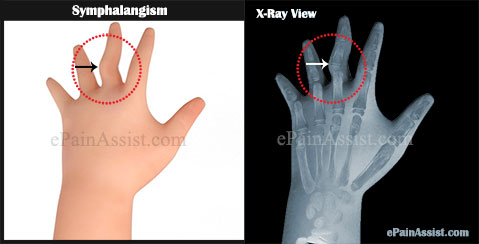What is Symphalangism?
Symphalangism is congenital disorder in which a baby is born with stiff digits as a result of Autofusion of the joints of the fingers or toe causing significant functional impairment for the child as the child grows.1 This condition is also cosmetically displeasing for the eye. The most common affected joint in Symphalangism is the Proximal Interphalangeal Joint or the PIP joint of the fingers. Symphalangism can both be inherited or non-inherited. If this condition is hereditary then it is an autosomal dominant trait. Symphalangism usually occurs in people suffering from other congenital disorders like Poland Syndrome or Apert Syndrome.1 This condition occurs due to some abnormality in the process in the developing stages of the hands and feet of the baby due to which the phalanges do not separate from each other resulting in Autofusion of the joints.
What is the Cause of Symphalangism?
There is no actual cause of Symphalangism identified but it usually occurs due to some abnormality in the process of development of the baby’s fingers of the hands or feet where the phalanges fail to separate from each other. It is believed to be both inherited as well as non-inherited condition. There have been some cases in which Symphalangism has run in the family and is believed to be an autosomal dominant trait. This condition is also believed to occur in the presence of certain other congenital syndromes like Apert Syndrome or Poland Syndrome.
Classification or Types of Symphalangism
Symphalangism has been classified in various categories based on the radiologic differences seen.1 These classifications are:
Grade I: This is also called as Fibrous Symphalangism and occurs when there is just a hint of joint space narrowing seen in the affected joint.
Grade II: This is called as Cartilaginous Symphalangism. In this type, there is minimal joint space observed on radiologic views.
Grade III: This is called as Bony Symphalangism and it occurs when there is clear bony ankylosis visible on radiologic films
What is the Clinical Presentation of Symphalangism?
The classic presentation of Symphalangism is extreme stiffness of the joints of the fingers with inability to comfortably move the finger. There is also absence of skin creases of the affected finger. It is visible deformity and can be easily visible at the time of birth. Normally, there will be more than one finger that is affected in Symphalangism and usually the PIP joint is affected resulting in the finger being fixed in extension. There will also be narrowing of the soft tissues in the affected finger. The child is not able to make a complete fist and has trouble in picking or grasping objects.
How is Symphalangism Diagnosed?
Radiologic studies in the form of x-rays can identify the grade of the condition.2 This condition cannot be radiologically confirmed immediately after birth because of lack of ossification of the phalanges around the affected joint. As the child grows when the bones start to ossify complete fusion of the joints take place which can be seen radiologically.
How is Symphalangism Treated?
Treatment for Symphalangism is based on the grade of the condition and how tough is it for the child to function with the affected hand. Digits which are fixed in extension can be treated by doing a surgical procedure called as flexion osteotomy. In cases of Symphalangism where the affected fingers may be short than normal then finger lengthening can also be done. Studies speculate that if a surgical release of the fusion is done when the condition is in the fibrous state then some motion of the finger can be attained. For such, the procedure should be done as soon as possible but in majority of cases gaining normal motion of the finger is quite difficult in Symphalangism.

